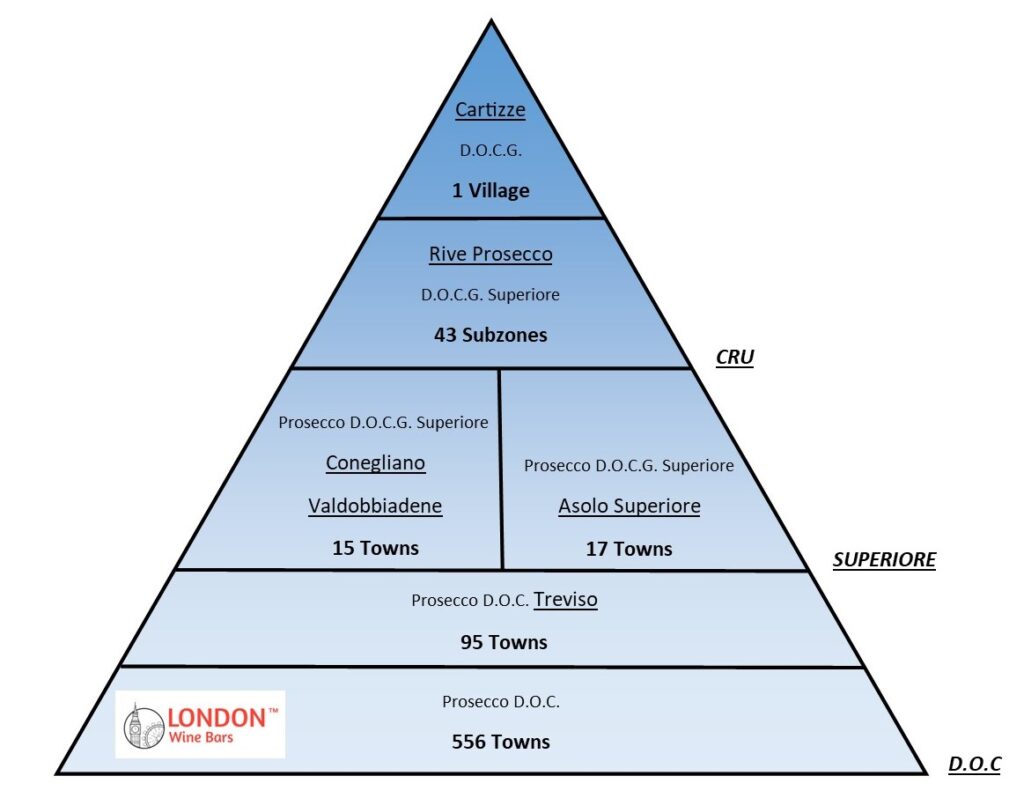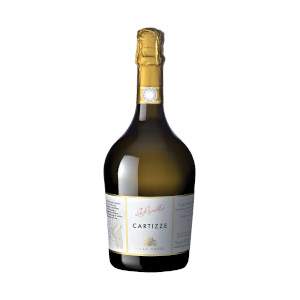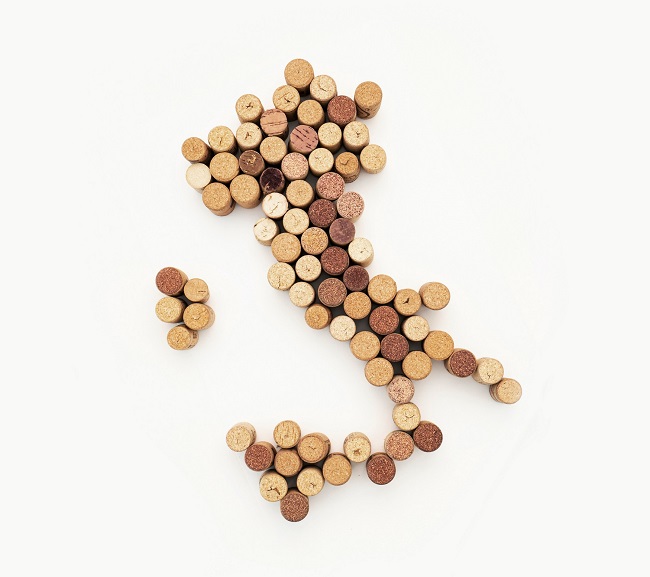Prosecco is primarily produced in the Veneto and Friuli Venezia Giulia regions of northeastern Italy. These areas are known for their picturesque landscapes, rolling hills, and vineyards.

The production of Prosecco is regulated by the Denominazione di Origine Controllata (DOC) and the Denominazione di Origine Controllata e Garantita (DOCG) labels, which ensure that the wine is produced in specific regions and adheres to certain quality standards.
If you’d like to read more on what DOC and DOCG means, take a look here Italian Wine Classifications Explained
Prosecco is made primarily from the Glera grape variety. The wine is known for its fresh, light, and fruity character, with flavours that often include green apple, pear, and citrus notes. It is typically produced in a frizzante (lightly sparkling) or spumante (fully sparkling) style.
Using the Charmat method, also known as the tank method, Prosecco differentiates itself from Champagne and Cava, which is made using the traditional method of second fermentation in the bottle.
So…. onto how to select the best Prosecco and how you can impress your friends in the park with your newfound knowledge.
As always, a diagram is the quickest way to get the gist of where the quality lies.

Prosecco is primarily produced in two main regions in northeastern Italy: Veneto and Friuli Venezia Giulia.
Here’s a summary of each region’s role in Prosecco production.
Veneto:
The Veneto region is the heartland of Prosecco production. Within Veneto, the following subregions are important for Prosecco:
a. Conegliano Valdobbiadene: Located in the hilly areas between the towns of Conegliano and Valdobbiadene, this is the most prestigious and renowned subregion for Prosecco production. It is known for its steep slopes, ideal sun exposure, and well-drained soils, which contribute to the high-quality grapes used to make Prosecco.
b. Asolo: Situated near the town of Asolo, this subregion is also recognised for its production of high-quality Prosecco. The hilly terrain and favourable microclimate provide excellent conditions for grape cultivation.
Friuli Venezia Giulia:
While Veneto dominates Prosecco production, Friuli Venezia Giulia also plays a significant role. This region is located east of Veneto, bordering Slovenia. The Prosecco produced in this area is often referred to as “Prosecco Superiore” and carries the designation of Conegliano Valdobbiadene Prosecco Superiore DOCG or Colli Asolani Prosecco Superiore DOCG, depending on the specific subzone.
a. Collio: The Collio subregion is known for producing Prosecco with distinctive characteristics. It benefits from a unique microclimate influenced by the nearby Adriatic Sea and the Julian Alps, resulting in wines with fantastic complexity.
b. Isonzo: Located near the Isonzo River, this subregion is known for its gravelly and alluvial soils, contributing to the mineral and elegant qualities found in the Prosecco produced there.
Veneto and Friuli Venezia Giulia have a long-standing winemaking tradition and have established themselves as critical regions for producing high-quality Prosecco. The specific subregions within these areas offer unique terroir and microclimates, contributing to the diverse range of Prosecco styles available.
So when you are next in the wine shop or your local M&S, you know how to cherry-pick the best bottles. Cartizze is a bit of a “Brut” to find, but you will know when you see it, it’s generally not labelled “Prosecco” but instead by its name, “Cartizze”.





